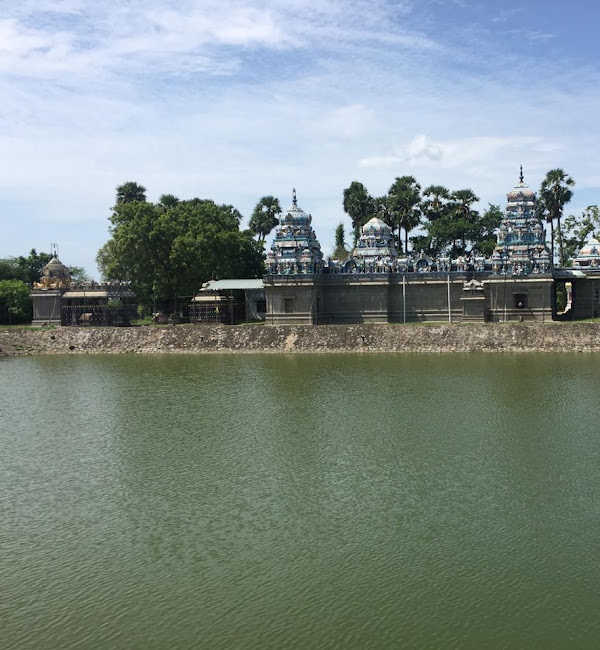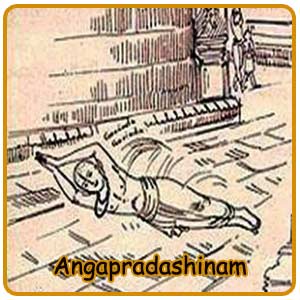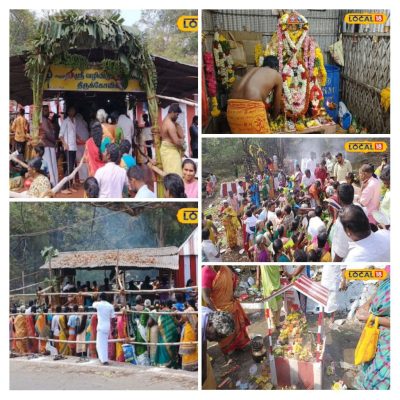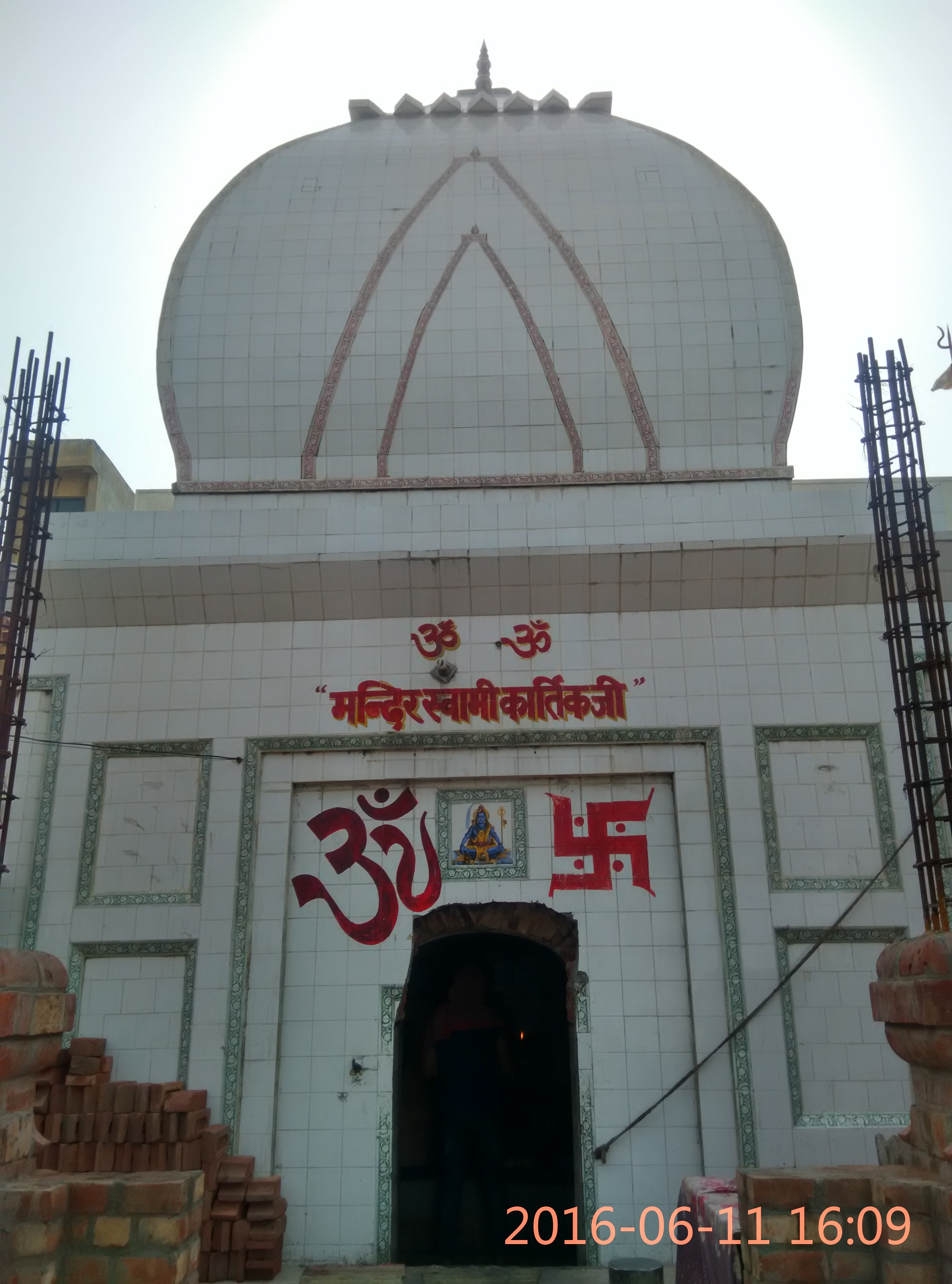Ezhuchur Nallinakka Eswarar Temple, Kanchipuram

Address
Ezhuchur Nallinakka Eswarar Temple, Kanchipuram
Ramakrishna Street, Chitlapakkam,
Kanchipuram district, Tamilnadu– 600 064
Phone: +91 – 44 – 2223 3857
Moolavar
Nallinakka Eswarar
Amman
Sri Deivanayaki
Introduction
Nallinakka Eswarar Temple is dedicated to God Shiva located at Ezhuchur Village in Kanchipuram District of Tamilnadu. The main deity here is called Sri Nallinakkeeswarar. Nallinakkeeswarar means ‘God of harmony’. Goddess here is Sri Deivanayaki. Ezhuchur is a small, beautiful village located about 57 kms south west of Chennai, on the road connecting Tambaram and Kanchipuram. The temple is about 1200 years old. A large snake is said to be visiting this temple daily 2 times and doing Pradakshina to the Shiva Idol.
Puranic Significance
This temple’s last Consecration undergone during 1948 after which it got dilapidated. Many trees, plants and bushes were covering the temple for so many years. An auto driver identified this temple inside the bushes during his trip to Ezhuchur and informed the local villagers. The native villagers have taken their initiative to completely rebuild the temple with stone structure and with much difficulty starting from the year 2000 to 2012 the temple was built up with Stone Structure and Consecration was performed on 29th June 2012.
The main deity here is called Sri Nallinakkeeswarar. Nallinakkeeswarar means ‘God of harmony’. Goddess here is Sri Deivanayaki. The temple in the Ezhuchur village is on a spacious land measuring about 2 acres amid an environment of pleasant greenery. Nardana Ganapathy, Dakshinamurthi Mahavishnu and Brahmma and Mother Vishnu Durga adore the Goshta. The prakara is all divine with shrines of Lords Vinayaka, Kala Bhairava, Muruga with his consorts Valli and Deivanai, Chandikeswara and Sun.
The main deity Sri Nallinakkeeswarar is in the form of a grand Shiva Lingam, facing east. Sri Ganapathy is seen at the entrance of the sanctum. The 2.5 feet tall presiding deity in his Shivalinga form appears majestically mounted on a broad Avudaiyar-peeta.
A shrine for Ambal, Sri Deivanayaki is at the left side of the sanctum, facing south. Opposite Ambaal shrine, a shrine for Shanmugar is being constructed. Mother Deiva Nayaki graces the devotees from a separate shrine right of the Maha Mandapam facing south in her standing posture. The idol of Mother is so realistic in every aspect, the toes, nails, the folding in the sari, her face full of compassion to all etc. She is the destination for those facing delays in their marriage proposals. They place the yellow thread at her feet, light three ghee lamps and perform archanas. After this prayer, they tie the yellow thread in the female palm tree – one of the sacred trees of the temple. The wedding of the devotee will take place within 90 days, it is believed. Those seeking child boons should light one ghee lamp in the other sacred tree Erenjil and 21 ghee lamps in Mother’s shrine and perform archanas.
Beliefs
People pray to Lord Nallinakka Easwarar for lasting affinity between husband and wife with a loving atmosphere with all members in the family and with relatives and friends. (The word Nallinakkam in Tamil means mutual co-operation with one another. Lord of the temple – Nallinakka Easwarar – is the spring of this noble character flowing through the minds of devotees). Devotees, especially singers, pray for sweet voice. They offer abishek to Lord with milk and honey to gain the boon. Men and women facing adverse effects of Mars pray to Lord Muruga in the temple. Devotees perform abishek to Lord and Mother with milk and honey and offer vastras. Sri Nallinakkeeswarar blesses the devotees for marriage, child birth and harmony within the family.
Special Features
Lord Muruga in the temple (the whole idol is made of a single stone) with his consorts Valli and Deivanai with the covering frame (Thiruvasi) around him blesses the devotees sitting on his divine peacock vahanam with one leg folded and one touching the ground. He is assuring his devotees with boons and safety by two hands holding various weapons in other 10 hands.
Navagrahams are present with their respective Vahanams; a few of them are in damaged condition.
As you enter the compound there is a Vinayaka temple on the right called Vazhithunai Vinayakar.
In front of Vazhithunai Vinayagar shrine is the unique Rajo Guna Nandhi. The most important of all here is the fantastic Nandhi. The Nandhi here is said to be very unique and not found anywhere else. This Nandhi is called as ‘Rajo Guna’ Nandhi. This peculiar Nandhi has beautiful ornaments and clothing, all carved on it. One of the forelegs is folded backwards and other one is in stretched position. Of the hind legs, one is folded while another leg goes beneath its stomach and this leg is seen jutting out on the other side. Similarly the tail goes underneath the belly and stretches out on its left side.
Nandhi is wearing elaborate ornaments around its neck. It wears garlands made of Rudraksha, an Iron chain, Salangai and a garland made of bells. Nandhi also adorns a beautiful Nethi Chutti (an ornament meant for forehead) on its forehead. It has a beautifully carved Vasthram (shawl) covering it and an ‘Ottiyaanam’ (hip ornament) too. Yaazhi is beautifully sculpted just above the legs.
It is sculpted with minutest of details as even the row of teeth of the Nandhi is so accurate. Nandhi is seen curling its tongue out reaching to its nostril on the right side. It is said that such posture is called ‘Pranayama Kolam’ (doing breathing exercise). Also the ears of the Nandhi are sculpted sharply in an unusually erect shape. It is said that the Nandikeswarar here is in the posture of doing Pranayama and listening to the Gayathri Manthra. It is said that Sri Jayendra Saraswathi Swamigal of Kanchi mutt had visited this temple, got so fascinated by this beautiful Nandhi and also was reported to have said that he had not seen such a beautifully sculpted Nandhi anywhere else. Thus, the Nandhi here gains much of admiration and stands as a masterpiece to the architectural excellence of our ancestors. One will need at least 5 to 10 minutes to go around and admire this Nandhi in detail.
There are 3 Sthala Vrikshams for this temple. ‘Pen Panai Maram’ (female Palm tree) is found behind the sanctum at the western side. ‘Vilvam’ is found at the southern side of the temple. ‘Eru Azhinjal tree’ also called Angola tree, which is considered most sacred and medicinal is another Sthala Viruksham here and is on the south east side of the sanctum. The palm tree behind the Adhishtanam of Shri Vyaasaachala Mahadevendra Saraswathy will not grow taller than the temple as seen in the last 3 generations as per Shri. Ramamurthy, a Trustee.
The Theertham for this temple is called ‘Kamala Theertham’ which spreads on a vast area and looks so beautiful. This water from this pond is said to have medicinal properties. There are a few steps to go down to the Theertham here. Hollow carvings are found on both sides of the stone steps, to pour oil and light the lamps during festivals. There is a Carving of a Sarpam on the steps of the Pond, to which Abhishekam is performed get relieved from Dhosham. It is believed that Theertham was built by Lord Surya when he came to worship Shiva here. Lord Mahavishnu with Mothers is behind the temple with Sri Anjaneya and Sri Garuda Bhagwan. There is also a separate Sannidhi for Vallalar seen on the southern side.
Festivals
Monthly Pradoshams and Shivrathri in February-March are observed in the temple.
This has been extracted from,
https://tamilnadu-favtourism.blogspot.com














Century/Period
1200 Years Old
Managed By
Hindu Religious & Charitable Endowments Department (HR&CE)
Nearest Bus Station
Ezhuchur
Nearest Railway Station
Tambaram
Nearest Airport
Chennai









